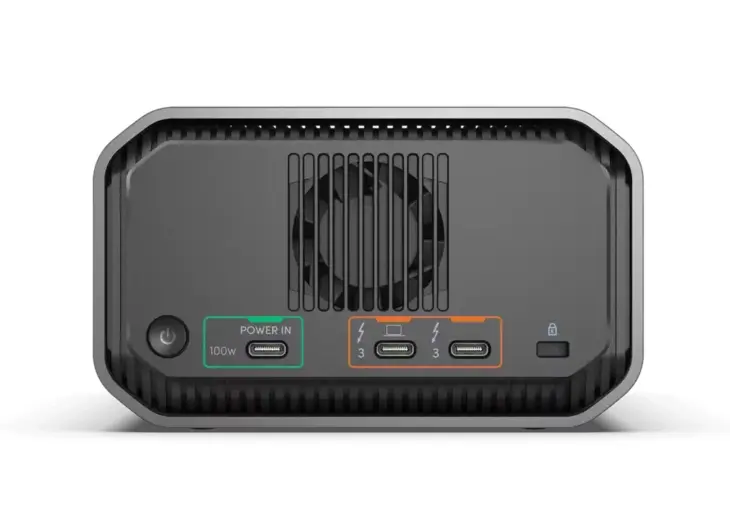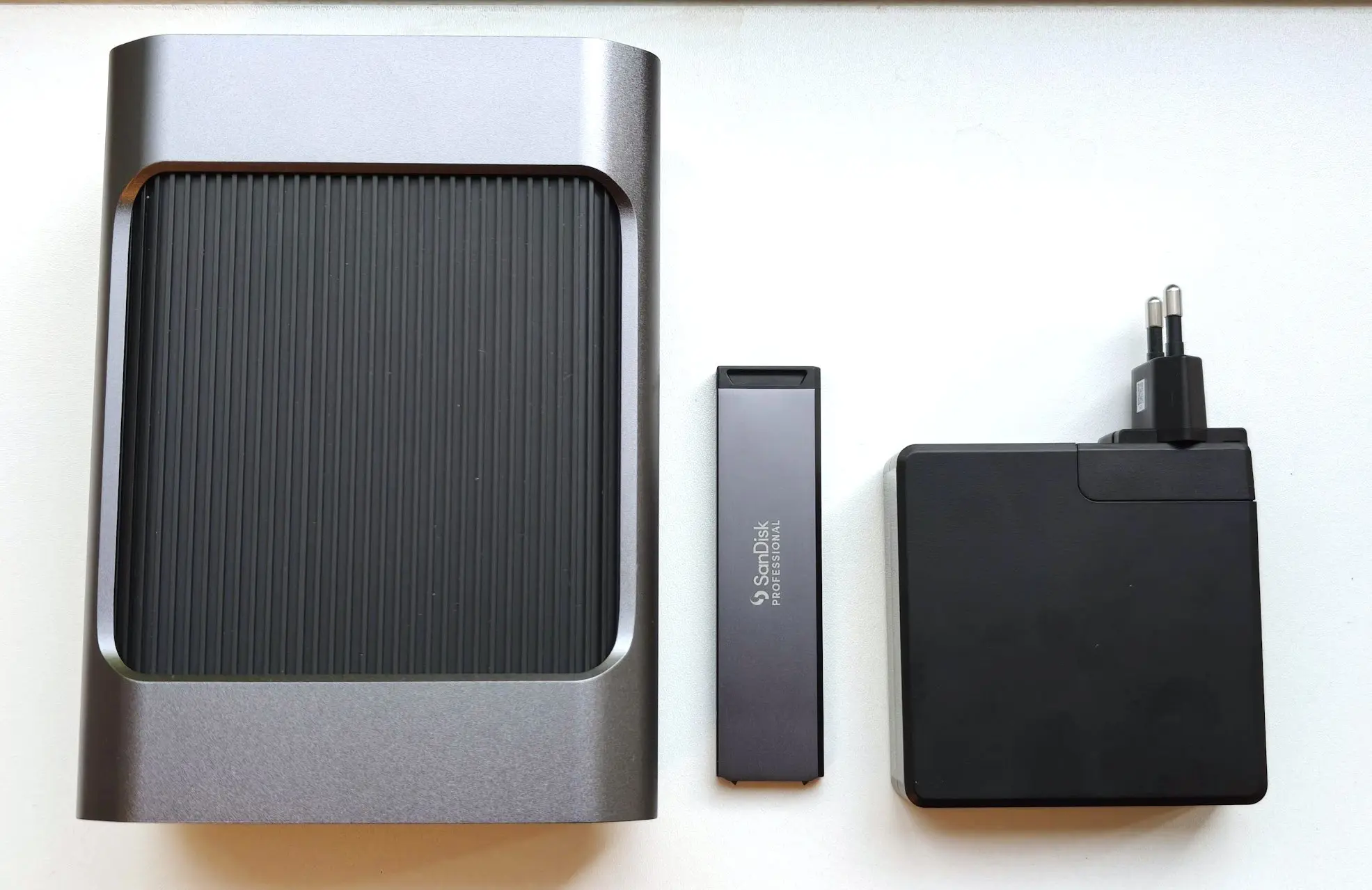SanDisk offers a unique solution to the storage needs of creative professionals with the SanDisk Pro-Blade Station. This device provides flexible yet lightning-fast storage. The expensive device performs well and looks neat, but a few minor flaws are noticeable.
Photographers, videographers, and other creative professionals have some unique needs. They create a lot of data, often on the go, and require very high-performance storage when processing that data during editing. SanDisk has an intriguing solution with the SanDisk Pro-Blade ecosystem.
SSD Mag
The core of this ecosystem is the SSD Mag. It’s a fast NVMe SSD in a rugged casing, available in capacities of 1 TB, 2 TB, and 3 TB. These are made to survive transport, even when dropped or crushed.
The SSDs quickly click in and out of various devices from the Pro-Blade range. There’s the Pro-Blade Transport, which together with an SSD Mag forms a kind of external SSD, and the Kondor Blue adapter that integrates the SSD Mag directly into a camera handle.
Central Station
We are working with one SSD Mag and a Pro-Blade Station (€579.99 incl. VAT). The Pro-Blade Station is a more static solution. The sturdy device offers space for four SSD Mags and is intended to have a spot on the desk, next to your workstation. You can see the SanDisk Pro-Blade Station as a kind of super-fast NAS for quickly swappable SSDs, from which you can edit.


The casing itself feels large and robust. The tough-looking dark gray device is certainly not subtle. You can easily click the SSD Mags into one of the four slots, each equipped with a status LED.
The Station supports Thunderbolt 3 and USB-C. SanDisk provides a data cable that we find inconveniently short. It’s not straightforward to place the Pro-Blade Station in your preferred spot on the desk with the provided cable.
At the back, you’ll find two data cable connections and a USB-C port for extra power. The Pro-Blade Station needs this for the active cooling of the SSDs inside. The cooling allows for high transfer speeds.
Gigantic Power Block
The included 100-watt power block is unfortunately incredibly large and heavy. The block rivals even powerful mobile workstations and is much larger than what you would use for a regular laptop.
It’s an incomprehensible choice by SanDisk to include such a large and bulky item in the box. 100-watt chargers exist in much smaller and lighter forms, and given the price of this device, the choice for a bulky example is questionable. Hopefully, you can conveniently plug it into an outlet without it getting in the way.

The cable provision leaves something to be desired. Once the Pro-Blade Station is connected, that’s of course no longer an issue. SanDisk promises high transfer speeds and delivers them. We measure 3,140 MB/s sequential read speed and 2,700 MB/s write speeds.
The main purpose of this device is to quickly upload SSD Mags. The device supports the simultaneous upload of four SSDs at high speed, but of course never higher than what the Thunderbolt 3 standard allows.
Pricey Solution
We struggle a bit with the price and concept of the solution. The station officially costs €579.99 incl. VAT, but online it’s often much more expensive. Essentially, the Pro-Blade Station is a very capable, yet also pricey way to transfer data from an SSD.
The SSD Mags themselves are fast but are sold exclusively by SanDisk at a hefty price tag. Expect around €154 incl. VAT. for the 1 TB version. For that money, you get a very strong SSD that doesn’t break under pressure and survives a fall from 3 meters high, but is unreadable. Peripheral devices like the Pro-Blade Station or the Pro-Blade Transport are essential for that.
In SanDisk’s vision, you have the three devices: a collection of SSDs for the data, the Transport for on the go, and the Station for in the editing suite. This way, you pay a lot of money for fast data transfer.
All Identical
If money is no object and higher speed is necessary, there’s something to be said for the Pro-Blade story. Although we still encounter objections. In SanDisk’s scenario, you have several SSD Mags. Only they are all identical.
Putting a sticker on the side is a risk, as you have to slide the drives into the slots of the Pro-Blade Station. So there’s no clear way to distinguish them from each other.
Simple Can Sometimes Work Too
You can also invest in a regular rugged external SSD. You might sacrifice some transfer speed, but you get a lot more storage for your money. The Samsung T7 Shield, for example, costs €194 incl. VAT for 2 TB and achieves transfer speeds of about 1,000 MB/s.
We understand where SanDisk wants to go with its Pro-Blade ecosystem. The robustness and performance of the solutions are not in question. Only you pay a high premium to enter the walled ecosystem.
Those who choose this can expect a perfect solution. A sufficiently long data cable, a modern (less bulky) power block, and a way to distinguish different SSD Mags from each other should not be missing.
Tested: SanDisk Pro-Blade Station (€579.99 incl. VAT) with SanDisk SSD Mag 1 TB (€154 incl. VAT.)
.pro’s
- Sturdy
- Convenient to use
- High performance
.contra’s
- Part of an expensive ecosystem
- Bulky power block and short USB cable
- No way to distinguish SSDs from each other
